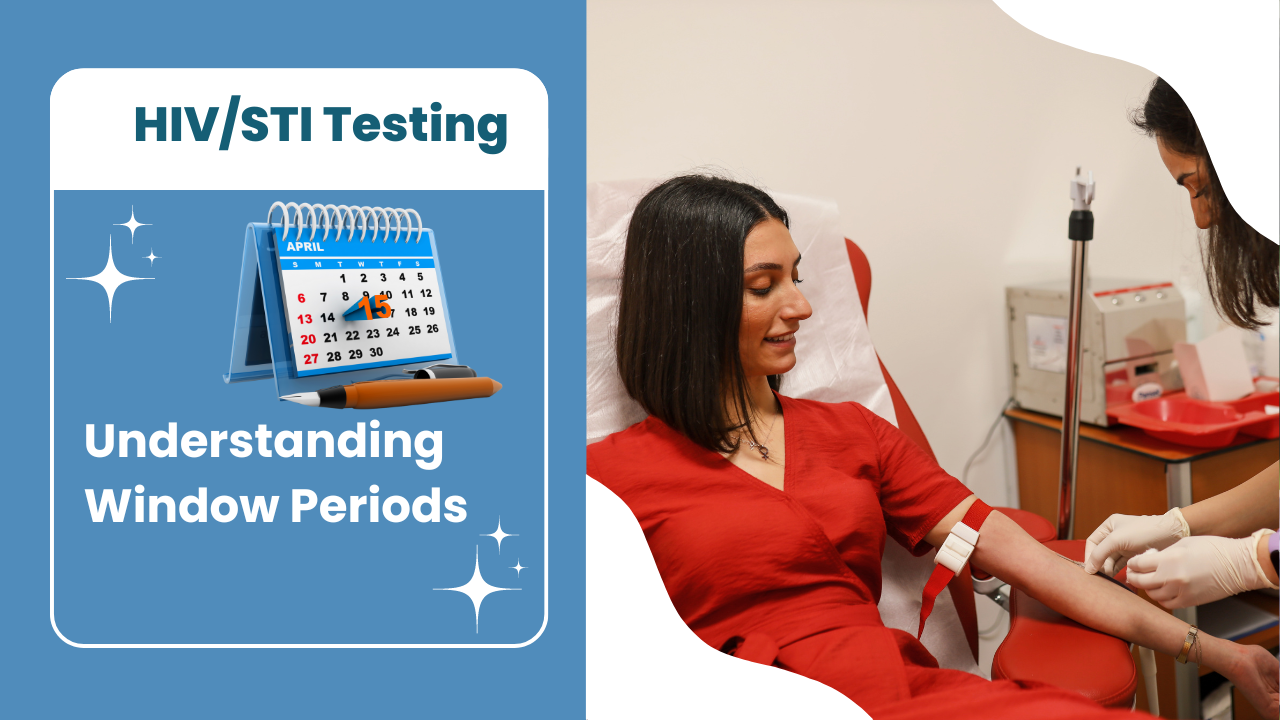In the realm of sexual health, understanding the importance of timely testing for HIV and other sexually transmitted infections (STIs) can be life-saving. A common challenge when it comes to testing is the concept of the window period — the time between potential exposure to the virus or infection and the point when a test can reliably detect it. Knowing when to get tested and what the results mean during this period can help you make informed decisions about your health.
What is a Window Period?
The window period refers to the time after infection when a test may not yet be able to detect HIV or other STIs, even though the infection is present in the body. During this time, your body may not have produced enough antibodies, antigens, or the virus itself in detectable levels for certain tests. The duration of the window period varies depending on the infection and the type of test used. Testing during this period could result in a false negative—a test result indicating no infection when the virus is actually present.
HIV Window Period
For HIV, the window period is influenced by the type of test you take:
1. Antibody Tests (3rd Generation): These tests detect antibodies that your immune system produces in response to HIV infection. The window period for antibody tests is generally 3 to 12 weeks. Most people will develop detectable antibodies within 4 to 6 weeks of exposure, but it can take up to 3 months for some.
2. Antigen/Antibody Tests (4th Generation): These are more advanced and can detect both HIV antibodies and the HIV p24 antigen (a protein produced by the virus). The window period for this test is typically 2 to 6 weeks after exposure. It’s widely regarded as one of the most reliable early detection methods for HIV.
3. Nucleic Acid Tests (NATs): These tests detect the actual presence of HIV in the bloodstream, not antibodies. NATs can detect HIV within 1 to 4 weeks of exposure, making them the most sensitive and effective test during the early stages of infection. These are commonly done by RNA PCR method.
STI Window Periods
For STIs, window periods differ depending on the type of infection and the method of testing.
1. Chlamydia and Gonorrhea: These bacterial infections can typically be detected through urine tests or swabs using DNA PCR method. The window period is about 1 to 2 weeks after exposure.
2. Syphilis: Testing for syphilis usually involves a blood test. The window period is around 3 to 6 weeks after exposure. However, syphilis can remain dormant for years, so periodic testing is crucial if you’ve been exposed.
3. Herpes (HSV): The window period for herpes can vary. Testing typically involves a blood test for antibodies, which may not appear until 2 to 12 weeks after exposure. However, if you have visible sores, a swab test of the lesion can confirm infection sooner.
4. Hepatitis B and C: These viruses can also be transmitted through sexual activity. The window period for Hepatitis B is around 3 to 6 weeks, while Hepatitis C can range from 2 to 26 weeks, depending on the test.
Why Timing Matters
Understanding the window period is essential to avoid testing too early, which could lead to a false negative. If you suspect you’ve been exposed to HIV or any STI, it’s important to talk to a healthcare provider about the best time to test.
Early detection allows for early treatment, reducing the risk of transmission and improving health outcomes. Additionally, some STIs may not show symptoms immediately, but they can still cause long-term health complications if left untreated.
What to Do After Possible Exposure
If you believe you have been exposed to HIV or an STI, here’s a step-by-step guide on what to do:
1. Immediate Action (HIV): If you’re concerned about HIV exposure, Post-Exposure Prophylaxis (PEP) can be taken within 72 hours to reduce the risk of infection. It involves a 28-day course of antiretroviral medication.
2. Wait for the Window Period: Consult a healthcare professional about the right time to test based on the type of exposure and the infection you’re concerned about. If you’re within the window period, ask if there’s an early-detection test available.
3. Get Tested: Use the recommended test for your situation, whether it’s a 4th generation antigen/antibody test or a NAT. Similarly, get tested for STIs like chlamydia, gonorrhea, syphilis, herpes, hepatitis B & C, and others based on your risk factors.
4. Follow-Up Testing: If you test negative during the window period, but your risk of infection is high, you may need to be retested after the window period has passed to confirm the results.
5. Practice Safe Sex: Use condoms and other protective measures to reduce your risk of exposure to HIV and STIs in the future. Discuss PrEP (Pre-Exposure Prophylaxis) with your healthcare provider if you’re at high risk of HIV.
The Importance of Regular Testing
Even if you don’t have symptoms, regular testing for HIV and STIs is crucial, especially if you’re sexually active with multiple partners. Some STIs can be asymptomatic but still lead to long-term health complications, such as infertility or an increased risk of contracting other infections. Routine testing is a key part of maintaining your sexual health and preventing the spread of infections.
Knowing the right time to test for HIV and STIs is essential for obtaining accurate results and ensuring timely treatment. Understanding the window period helps minimize the chances of a false negative and keeps you informed about your health. Don’t hesitate to consult with a healthcare provider to determine the best testing schedule based on your situation. Early detection, prevention, and treatment are the keys to safeguarding your health and that of your partners.

